100 Years of American Stadium Design in 5 Minutes
Modern American stadium design has evolved significantly since sports exploded in popularity at the turn of the 20th century. In the beginning of American sports popularity, baseball and football were at the forefront of live entertainment. The changing trends in baseball and football stadium design reflect both how these sports have influenced culture and how […]
Jennifer Liebschwager on 2/3/2017
Categories: Pro Sports and Colleges

Modern American stadium design has evolved significantly since sports exploded in popularity at the turn of the 20th century. In the beginning of American sports popularity, baseball and football were at the forefront of live entertainment. The changing trends in baseball and football stadium design reflect both how these sports have influenced culture and how culture has influenced these sports. Here’s a look at different design milestones in the past hundred years:
The beginning
Baseball’s popularity initially grew at the professional level, with Fenway Park (opened in 1912), Wrigley Field (opened in 1914, not home to the Chicago Cubs until 1916) and Yankee Stadium (opened in 1923).
![Stadiums Wrigley Chicago 6192-97_NBL]() Wrigley Field, photo credit: Baseball Hall
Wrigley Field, photo credit: Baseball Hall
Sometimes referred to as “jewel box parks”, these early stadiums had the classic design elements that define baseball nostalgia today, with red brick, stone and exposed steel construction accented with dark green seating and fences.
Football stadium construction initially expanded at the college level, with Franklin Field at University of Pennsylvania (opened in 1895), Harvard Stadium (opened in 1903), and the Yale Bowl (opened in 1914). By the 1920s more than twenty universities had invested in new stadiums, and the oval or horseshoe-shape design of these early stadiums is still mirrored by many college football fields today.
Competing with TV
Sports teams have competed with TV for fans’ preference since the first football game was televised in 1951. 1950s stadium design for both baseball and football reflected this, defined by fan comfort improvements, including expanded seating areas with better sightlines, more concessions selection and more developed concourse areas.
When football fandom grew at the national level and professional teams began investing more in stadiums, design trends changed more rapidly. These venues crafted a masterful balance between large scale design and fan amenities, with Lambeau Field home to the Green Bay Packers (opened in 1957) and Candlestick Park home to San Francisco 49ers (opened in 1960).
Teams wanted to improve the fan experience and maximize income so it became more popular to enclose stadiums with dome-shaped roofs, beginning with the Houston Astrodome in 1965. The covered stadiums shielded fans from bad weather conditions and created opportunities to hold non-sporting indoor special events to generate extra revenue.
![140206152826-03-astrodome-fate-restricted-horizontal-large-gallery]() Houston Astrodome, photo credit: CNN
Houston Astrodome, photo credit: CNN
The 1960s also saw the rise of multiuse stadiums built or renovated to accommodate both baseball and football. In concept, multi-use stadiums provided two benefits: governments and sports teams could share facility costs and fans could enjoy their two favorite sports at the same location.
![fenway-park]() Boston Patriots (Now the New England Patriots) played at Fenway Park from 1963-1968; photo credit: Stadiums of Pro Football
Boston Patriots (Now the New England Patriots) played at Fenway Park from 1963-1968; photo credit: Stadiums of Pro Football
Although they were a prevalent design style for a decade, multi-use stadiums diminished due to two primary issues: differences in crowd size and optimal sightlines between the sports. Baseball fans liked a cozier environment and experienced too many empty seats during weekday games, while football fans required large seating areas to accommodate attendance during weekends.
While the multi-use trend declined in popularity for outdoor sports, many trends introduced during this era, such as expanded concourses and domed roofs, are fundamental design elements in modern stadiums today.
Competing with sports bars
Cable TV rose in popularity in the ’80s, and with it fans were offered an endless selection of sports channels and offerings. Sports bars capitalized on cable to attract people who wanted to experience the thrill of games with fellow fans without the time and money investment of attending a game in person. Bars joined fans’ homes as another major competitor that the live stadium experience would have to match and overcome.
In the 1980s, baseball nostalgia drove a jewel box ballpark trend harkening back to the Golden Age of baseball. Camden Yards, designed by architects HOK Sport Venue Event (now known as Populous), was the first stadium design to pioneer the trend that has endured for decades. These retro-classic parks included all the luxuries of the newer parks with a classic look and feel of dark green fences and seating, exposed steel, stone and red brick exterior construction.
![camden_061110_out00]() Camden Yards, Photo Credit: Stadium Page
Camden Yards, Photo Credit: Stadium Page
Modern public spaces with advanced technology
As live entertainment has been redefined, stadium design today has followed. Combining fan comfort, cutting edge-architectural design and a strong sense of history, today’s modern stadiums are urban landmark entertainment destinations that revitalize the live sports experience and the host city’s prestige. The most extravagant venues combine form and function with signature design elements:
- Retractable roofs
- Center stage large scale LED video displays
- Dramatic architectural shapes
- Finished luxury spaces
- Aesthetic finishes on the exterior, like architectural LED lighting or large open window accents
Another popular trend is designing a more finished look for public spaces within the stadium, like bars, clubs and concourses. Instead of exposed structure and block walls, venues have renovated the entrance experience and added premium experiences like suites that have traded materials like wood and steel for quartz and granite. They are also modernizing public spaces with LCD networks and UHD LED displays to revitalize these areas with vibrant color and live digital media.
![target-station-outside]() Target Field; photo credit: Stadium Page
Target Field; photo credit: Stadium Page
Mercedes Benz Stadium
![marlins_park_exterior_630x300]() Marlins park (photo credit: Wikipedia)
Marlins park (photo credit: Wikipedia)
Looking forward
So what’s next in stadium design? We predict more teams will add hangout places like tailgating areas, bars and clubs as a way to entice fans to arrive earlier and stay later. Only time will tell, but if the past century’s stadium evolution is any indication, fan expectations always rise and the stadium of the future will find more sophisticated ways to meet these demands.
Subscribe to our blog
Get the latest articles on sports trends, new Daktronics projects and insider looks at our manufacturing and reliability lab. Sign up here: https://blog.daktronics.com/category/pro-sports-and-colleges/
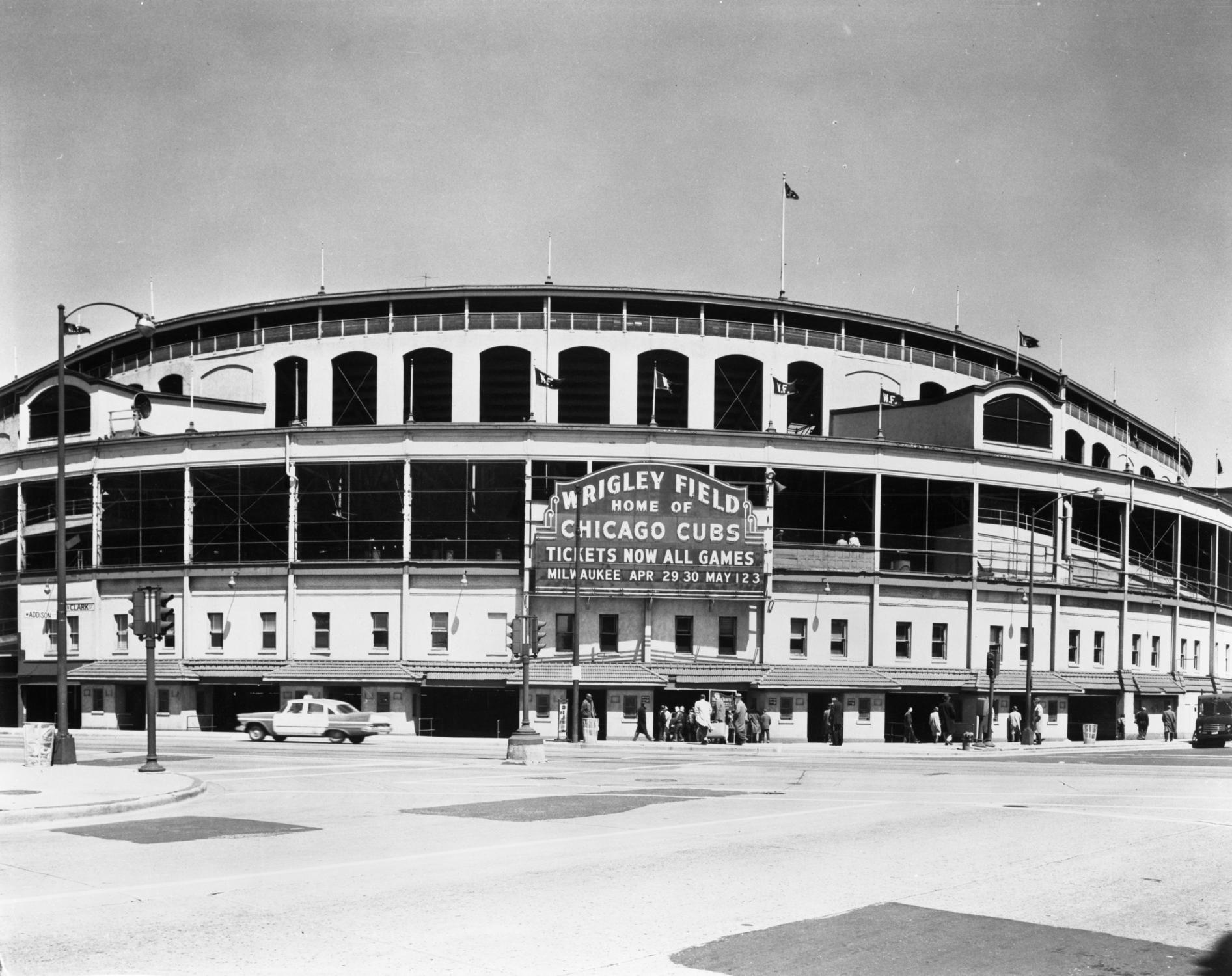 Wrigley Field, photo credit:
Wrigley Field, photo credit: 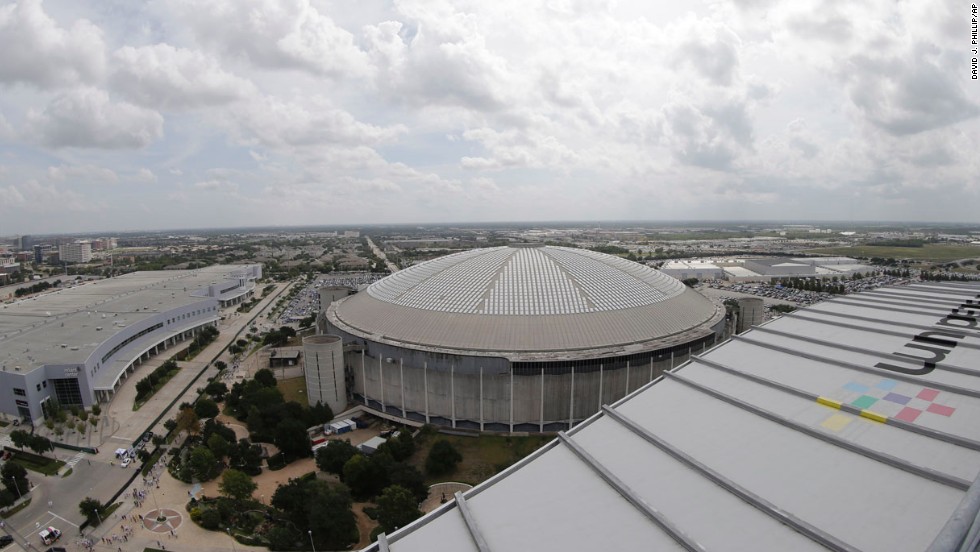 Houston Astrodome, photo credit:
Houston Astrodome, photo credit: 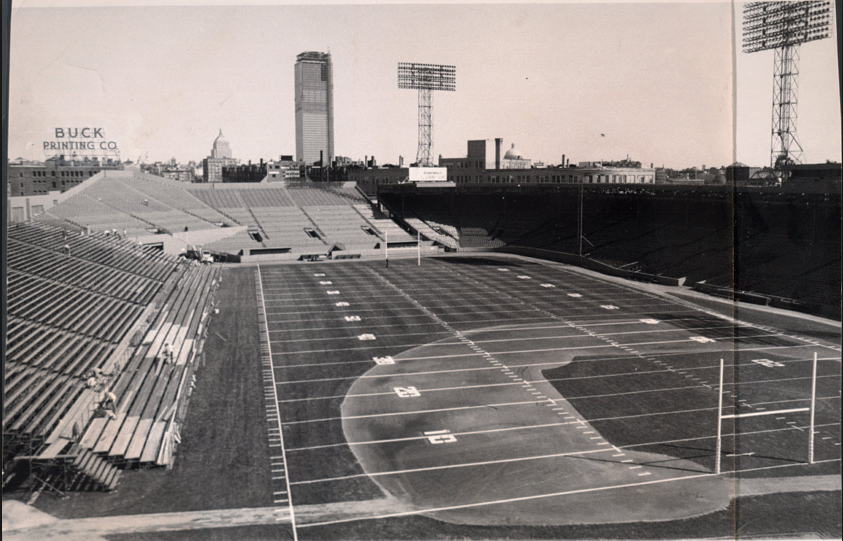 Boston Patriots (Now the New England Patriots) played at Fenway Park from 1963-1968; photo credit:
Boston Patriots (Now the New England Patriots) played at Fenway Park from 1963-1968; photo credit: 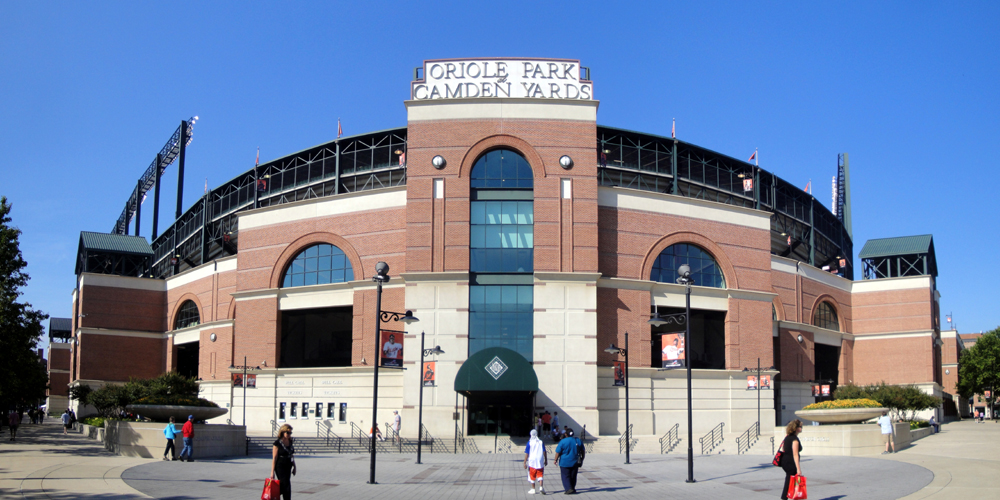 Camden Yards, Photo Credit:
Camden Yards, Photo Credit: 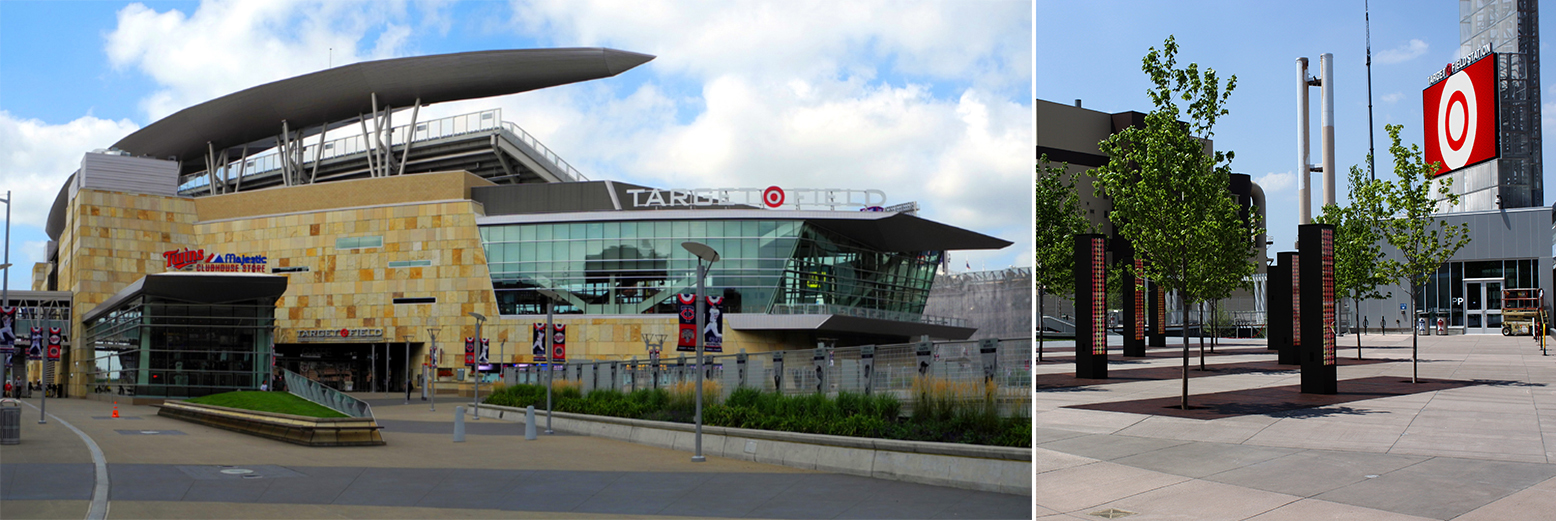 Target Field; photo credit:
Target Field; photo credit:  Marlins park (photo credit:
Marlins park (photo credit: 